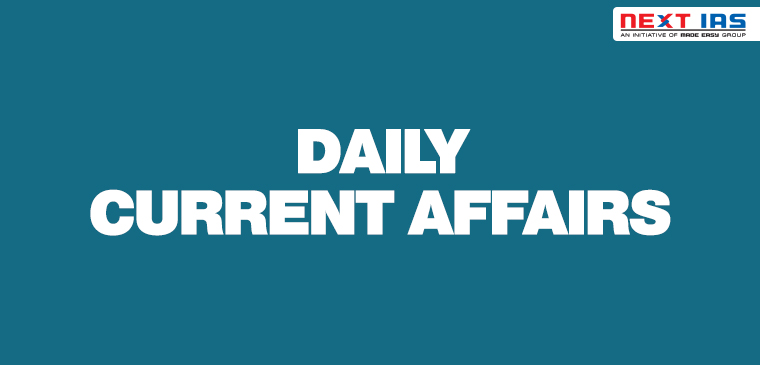
In News
Recently, the Ministry of Women and Child Development has been working for faster implementation of gender budgeting.
- The Ministry has made consistent efforts to support the institutionalization of Gender Budgeting (GB) at the State/UT level.
Recent Developments
- Steps Taken by States/UT: 27 States/UTs have adopted Gender Budgeting and have taken various steps to address gender gaps and advance gender equality.
- Nodal Department: These steps inter-alia include identification of a nodal Department for Gender Budgeting, constitution of Gender Budgeting Cells, formulation of State Women/Girls Policy, creation of Gender Data Bank and adding Gender Budget Statement in the State Budget.
- Additionally, 21 States/UTs have established designated State Nodal Centres for sustained capacity building efforts on Gender Budgeting.
- Handbook by Ministry: The Ministry has developed a handbook for Gender Budgeting to further strengthen the process of institutionalizing gender mechanisms across sectors and across all levels of governance.
- Financial Support: The Ministry also provides financial support to Government training institutions for capacity building of Government officials to enhance Gender Budgeting at the State/UT level.
(Image Courtesy : TOI)
Gender Responsive Budgeting
- Definition: GRB allows policymakers to apply a gender lens on fiscal expenditure, earmarking funds for gender-specific outcomes in the Union Budget, rather than producing a separate budget.
(Image Courtesy : TOI)
- India’s History: India has been producing a Gender Budget Statement (GBS), as part of the Union Budget since 2005-06.
- Gender Budget at present: The gender budget is less than 1 per cent of the GDP.
- Analysis of 2021-22 Gender Budget
- Over the years, GB’s proportion in the budget has stagnated, hovering around 5 per cent.
- In the last financial year, the Gender Budget stood at Rs. 1,43,462 crore or 4.72 per cent of the total budget.
- The actual expenditure increased to Rs. 2,07,261 crore, reflecting the government’s gender-sensitive response to Covid-19.
- The post-pandemic situation continues to be problematic:
- Disproportionate job losses faced by women.
- Spike in dropout rates of girls further exacerbated by gender gaps in access to digital tools.
- Rise in cases of domestic abuse during the lockdown.
- Disruption to reproductive.
- Maternal health services faced closure of Anganwadi centres.
- Worrying Trends
- Falling Female Labour Force Participation Rate (LFPR).
- India’s 112th rank among 153 countries in the World Economic Forum’s Global Gender Gap Index 2020, which slipped from 108th position in 2018.
- These pre-Covid-19 trends warrant revisit India’s fundamental approach to GRB as well.
International Experience
- Over 90 countries have adopted Gender budgeting and each one has had a unique experience with its implementation. Three broad approaches have been taken for implementation globally:
- Needs-based Gender Budgeting
- Specific sectors are prioritised to bridge prevailing gender gaps.
- For instance, Rwanda targets spending towards provision of basic sanitation facilities for improving school enrolment and retention.
- The United Kingdom introduced tax-free universal child care to make it easy for new mothers to rejoin work.
- South Korea increased funding for programs aimed at reducing the burden of domestic work on women.
- Gender-assessed Budgets
- Gender disaggregated impact assessment of allocations is conducted.
- Iceland legally mandates that the Ministry of Finance ensure the Budget Bill lay out its impact on gender equality.
- Canada provides a gender-based impact analysis of the Budget.
- Uganda trains Finance Ministry officials to produce gender disaggregated data, to undertake the budget’s gender-based impact assessment.
- Gender-informed resource allocation
- Increasing gender equality is the metric to determine budgetary allocations across all ministries.
- Sweden created a framework for gender-sensitive allocations at each stage of their budget process.
Challenges
- Increasing the size of the gender budget, making women-focussed expenditure more targeted and enhancing GRB efforts at the State level.
- Its range should be increased to more sectors and departments.
- Monitoring and implementation remains inadequate due to lack of accountability mechanisms.
Way Forward
- Increase allocations for women focussed programmes
- India’s ranking on the Global Gender Gap Index fell from 87 (2016) to 108 (2017) in just one year.
- Several international surveys continue to rank India as one of the worst places to be a woman.
- Despite an ambitious road map and MWCD’s commitment to GRB at the national level, the Central government’s gender budget has never been more than 1 per cent of India’s GDP.
- There is a pressing need to prioritise women’s safety, education, health, and workforce participation; which necessitates a significant increase in allocations.
- Improve targeting
- Funds need to be targeted towards priority sectors,which suffer from the deepest gender inequalities.
- These sectors should be determined by rigorous research to ensure that targeted spending creates a virtuous cycle, and has a multiplier effect on women’s living standards.
- Create a ranking for state-level gender budgets
- Akin to the ease of doing business ranking, States should be ranked on the quality of gender budgets, impact analyses, and gender audits of these allocations.
- Capacity building and technical support should be provided to State-level Gender Budget Cells by MRCD for this exercise.
- Improve accountability
- In line with the recommendations of the Planning Commission’s Working Group on Women’s Agency and Empowerment made in 2012, it is recommended that the Outcome Budget should be gender mainstreamed.
- Gender audits of centrally sponsored schemes and flagship programmes should be undertaken to measure impacts.
- This also necessitates increased efforts for the collection of gender disaggregated data at national, state and district levels.
Source: PIB
Previous article
Airport Economic Regulatory Authority Amendment Bill, 2021
Next article
Facts in News


